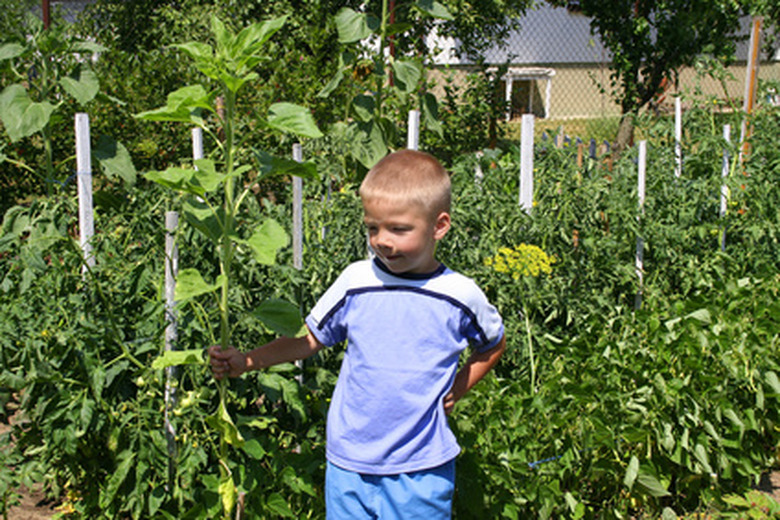How To Plan An Idaho Vegetable Garden
Things Needed
- Clear polyurthene plastic film
- Granular fertilizer for vegetables
- Row covers or plastic milk jugs
- Compost or manure
- Seeds and vegetable plants
Idaho gardeners are masters of creativity and persistence. They face short growing seasons, unpredictable temperatures, high winds, and low humidity. Most of Idaho falls in USDA Plant Hardiness Zone 4, although some areas are in zone 3. These zones have a growing season of only 21 days some years. Gardeners in Northern Idaho, especially, must contend with the challenges of high-altitude gardening. Southern Idaho gardeners also experience high winds and short growing seasons, but this region is blessed with fertile, loamy soil and warm, summer days. Additionally, the canal systems weaving through the farmlands of Southern Idaho make irrigation convenient.
- Idaho gardeners are masters of creativity and persistence.
- Southern Idaho gardeners also experience high winds and short growing seasons, but this region is blessed with fertile, loamy soil and warm, summer days.
Step 1
Select your garden site carefully. Choose a site with full sun and some protection from wind in the form of a building or tree windbreak. A gentle slope is preferable to flat, low ground where cold air tends to gather.
Step 2
Till 2 inches of compost or manure into the soil to improve drainage. Most gardeners in Southern Idaho have good soil, but gardeners at higher altitudes may have compacted clay soil or infertile soil made from crushed granite. Clay soils don't drain well and stay cold longer in the spring.
Step 3
Lay a sheet of clear polyurethene plastic film on your soil 3 to 4 weeks before you intend to plant your garden. According to the University of Idaho Extension Office, polyurethene plastic warms the soil by 10 to 15 degrees Fahrenheit in only a few days, and clear plastic warms the soil more effectively than black plastic.
- Select your garden site carefully.
- According to the University of Idaho Extension Office, polyurethene plastic warms the soil by 10 to 15 degrees Fahrenheit in only a few days, and clear plastic warms the soil more effectively than black plastic.
Step 4
Start seedlings indoors 4 to 6 weeks before the last expected frost or buy nursery plants. Plant cool-season adapted plants such as carrots, peas, lettuce, turnips and radishes 3 to 4 weeks before the last frost. These crops are good choices for Idaho's climate. Buy short-season seeds for crops such as corn, beans and melon. Look for varieties that mature in 70 days or less.
Step 5
Plant your seeds in rows oriented north to south for optimum light. Protect your seeds from chilly nighttime temperatures by installing row covers or even plastic milk jugs. Cut the bottoms off the milk jugs and place them over young plants. Remove these devices as plants get bigger and especially when they begin flowering so bees can pollinate them.
- Start seedlings indoors 4 to 6 weeks before the last expected frost or buy nursery plants.
Step 6
Fertilize your plants 2 weeks after planting with a nitrogen vegetable fertilizer. Spread the fertilizer around the plants, without touching the roots or leaves and water the fertilizer in for 20 minutes. Thereafter, fertilize your vegetable garden every 3 to 4 weeks. Keeping vegetables well-fed will speed their growth and allow them to mature before the first winter frost.
Step 7
Water your vegetables in the evening to conserve moisture and warm the soil. Idaho's low humidity inhibits diseases that breed in wet conditions, so watering at night works well here. The wind is generally calmer at night, too.
- Fertilize your plants 2 weeks after planting with a nitrogen vegetable fertilizer.
- Water your vegetables in the evening to conserve moisture and warm the soil.
Tip
Build raised beds for your garden. The soil warms more quickly in the spring and you can install row covers to protect your young plants from frost.
